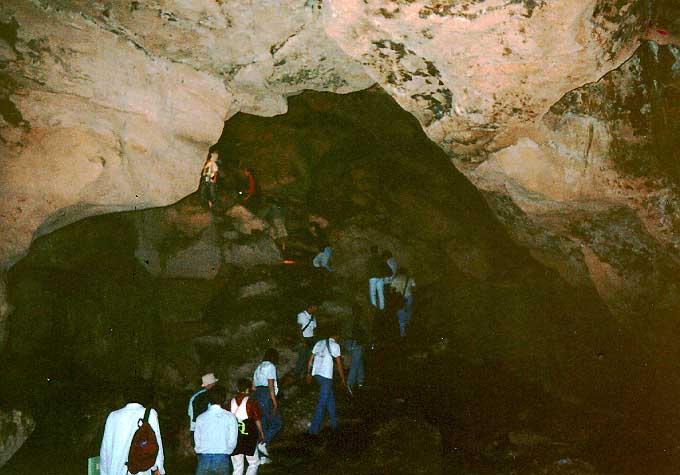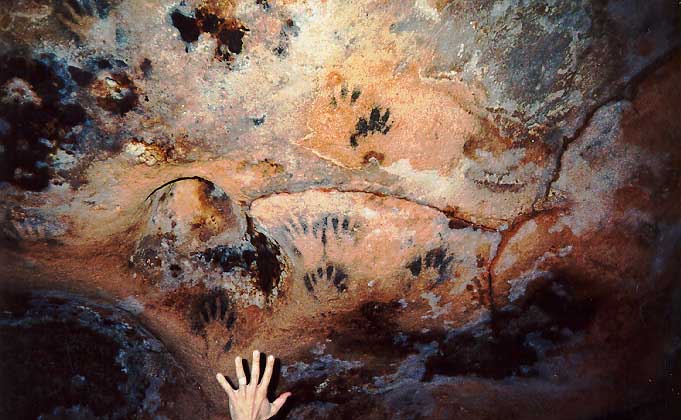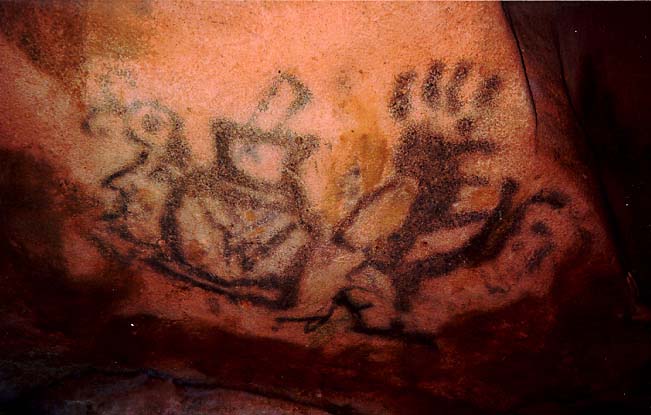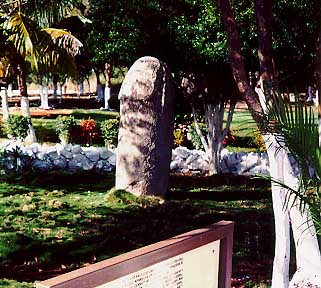

Click on the thumbnail photograph or underlined text to see the picture
in greater detail.
Links will work faster if you allow the entire page to load.
 |
Loltun Caves are located within the Puuc hills of Yucatán and are open to the public. The massive interconnecting caverns, such as the one seen here, are visited on occasion by bus loads of tourists visiting the nearby ruins of Uxmal, Labna, Sayil, and other sites in the Puuc hills. Few realize the importance of this set of caves in the prehistory of Mexico. Loltun has given archaeologists some of the earliest evidence for humans in the New World. The caves were used as a butchery for Ice Age fauna during the Paleoindian Period of Mesoamerican prehistory. |
 |
Other notable features of the Loltun include a bas-relief carving at one of the entrances which dates to the Late Preclassic (one of the earliest carvings in this area). And of course within the caves archaeologists have found many examples of prehistoric cave drawings. Hand outlines similar to these were left on the nearby ruins of Uxmal, dating to the Late Classic Period. But the hand outlines at Loltun may be centuries older. |
 |
This is a wonderfully preserved example of Maya cave art. I have not seen any publications which discuss this painting, so I will hazard a description for those who have trouble seeing what is depicted. There seems to be a large face on the right which may be wearing a dark mask. In front of this face is an effigy vessel with a human head as the effigy adornment. This effigy head is wearing a bird headdress. An object which may be a stirrer is sticking out of the top of the effigy vessel. |
 |
Outside of one of the entrances to Loltun Caves is a large phallic monument. This monolith is almost the height of a person, and is very anatomically correct. It is a rather large example of a phallic tradition which was widespread in the Puuc region during the Late/Terminal Classic. This particular phallus was not originally found at Loltun. It was found at a small site nearby and transported to the Loltun archaeological zone for protection and for the visiting public. Two other phallic monuments from Yucatan are also linked to this image. |